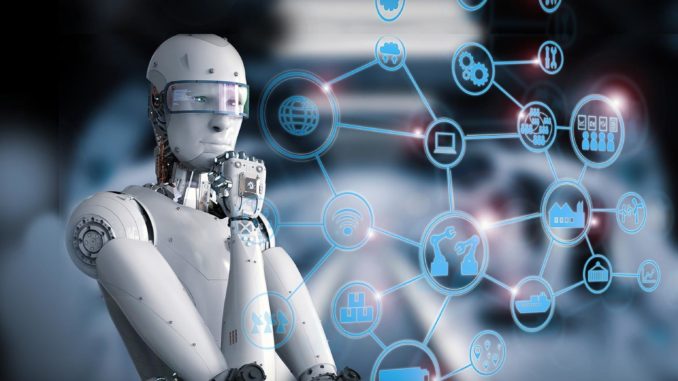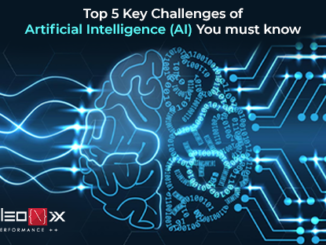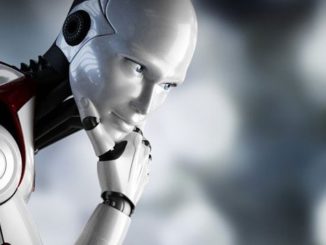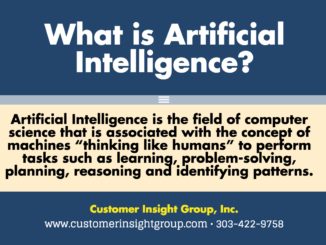
During the 1980’s, in America there was much interest in the field of Artificial Intelligence. The great expectations of the 1980’s were followed by the skepticism of the 1990’s, at which time the limitations of capabilities of our current computers were emphasized. The skepticism of the 1990’s has now for the most part passed, and one of the main scientific and industrial challenges of the 21st century is the development of Artificial Intelligent Systems (AIS).
The development of AIS is aimed at the creation of new technologies that will provide solutions to problems in the areas of electronics and heavy industries, agriculture, energy and resource conservation, transportation, human health, public safety, national security, and other fields.
Speaking at a conference in Buenos Aires in 1995, Albert Arnold Gore, Jr. (Vice President of the United States from 1993-2001 under President Bill Clinton) remarked, ‘These highways, or more accurately, networks of distributed intelligence, will allow us to share information, to connect, and to communicate as a global community. From these connections we will derive robust and sustainable economic progress, strong democracies, better solutions to global and local environmental challenges, improved health care, and ultimately, a greater sense of shared stewardship of our small planet’.
From a historical point of view, AIS appeared in the last century as result of the evolution of man-machine systems, in which the functions of man and machine are interrelated for the operation of these systems. For example, a craftsman operating a working lathe, a driver and his running car, and the workers and machines at a power station all form man-machine systems. In a man-machine system, the human operator supplies the goal, the direction, and the integration. The machine executes everything according to the given directions, and provides feedback.
In the process of man-machine systems evolution, the role of man has decreased relative to the role of the machines he operates. To execute routine functions, machines have been increasingly equipped with control subsystems, and the resulting man-machines systems were referred to as “semi-automatic” systems. Progressively, many semi-automatic systems have transformed into automatic systems.
Thanks to computer systems, a fantastic change has taken place in many areas of technology during the last few decades. Previous machines had the role of executing tasks given to them by human beings. Today, these machines are equipped with very advanced programmable control systems and various kinds of sensory devices, enabling them to execute many human tasks, including creative problem solving. Meanwhile, engineers and scientists working on bionic technologies are getting closer to creating machines that can perform some human functions for people with disabilities. As a result, the preconditions for the birth of artificial intelligence appeared.
Ray Kurzweil, in his very interesting book, The Singularity is Real, found an appropriate metaphor to describe the process of computer systems dissemination. He commented, ‘Advancing computer performance is like water slowly flooding the landscape. A half century ago, it began to drown the lowlands, driving out human calculators and record clerks, but leaving most of us dry. Now the flood has reached the foothills, and our outposts there are contemplating retreat. We feel safe on our peaks, but at the present rate, those too will be submerged within another half century.’
It is fair statement regarding Artificial Intelligence (AI) as well. In the past few years, some AI programs and systems have successfully copied selected human brain functions, and extended human cognitive and decision-making abilities. As a result, some machines in existence now can execute the knowledge-based functions of a human operator, but with better quality. The inventor of the Lisp programming language, John McCarthy, who also coined term “Artificial Intelligence” in his proposal for the 1956 Dartmouth Conference, defines AI as “the science and engineering of making intelligent machines.”
The term “intelligence” is derived from the Latin, “intellectus”, and is defined as “mind, powers of human thinking”. According to the Merriam-Webster dictionary, “intelligence” has many meanings:
o the ability to learn or understand or to deal with new or trying situations: for example, the skilled use of reason or the ability to apply knowledge to manipulate one’s environment or to think abstractly as measured by objective criteria
o information concerning an enemy or possible enemy or an area; and an agency engaged in obtaining such information
o mental acuteness
o the basic eternal quality of the Divine Mind (Christian Science)
o the ability to perform computer function
It makes sense to analyze the definition, “the ability to perform computer function”. At first glance, an executable computer program, which provides computer function (for example, calculation or text writing), doesn’t have intelligence. However, consider for a moment that “human or animal instinct”, is the inherent disposition of a living organism toward a particular behavior. Based on our knowledge of computers, we can count “instinct” as a group of programs written on genetic material such as DNA
When a worker performs his tasks automatically, it means he has in his brain the “programs” necessary for automatic actions. In part, these programs were created by the special training he received to enable him to do his job. Congenital and acquired programs are all part of human intellect, or intelligence. It is the same for an executable computer program. The program bears a portion of the intellect of its creators, translated into a language (code) that the machine understands.
Therefore, an executable computer program has some intelligence. Modern computer systems that can, for example, choose an optimal decision, or make a rational analysis of external influences for this decision, are intelligent systems. This is the reason why AI is a powerful resource for solutions to a diverse range of problems (including those not formalized) for which there are currently no known solutions.
Historically, the term “intelligence” was connected with government organizations (agencies) devoted to the gathering of information for purposes of national security and defense, such as the Central Intelligence Agency (CIA) in America. Today, this term has a broader meaning, with practical applications to real systems and products. AI methods include elements found in cybernetics, computer science, psychology, neuroscience, cognitive science, linguistics, operations research, economics, control theory, and math, among others. AI also connects and overlaps with such fields as robotics, control systems, scheduling, data mining, and logistics.
Artificial Intelligence Systems are the realization of artificial intelligence science. In other words, AI could be called, “Application of Artificial Intelligence”. The term, “AI” is also used to describe an intelligence property of new machines or programs. Many AI experts are predicting that by the middle of this century, intelligent machines will be all around us. Machines such as robots already touch our lives. Automobiles, electronic devices, and aircraft are assembled and tested with the help of various robotic machines. The reality that computers have saved the world from information explosion, while becoming affordable to students and other everyday users, is largely due to the use of intelligent machines. Just about all of the machines around us are rapidly becoming “intelligent”, with help of the intelligent applications. Revenues generated by the AI and robotic industries are now measured in the billions of dollars annually.
With the advanced computer-based systems used in traffic control or manufacturing control, it is reasonable to retain human ability to solve bottleneck problems in real time. Man-machine systems can exist with different levels of automation (from manual to autonomous), and Artificial intelligence systems can have different grades, from simple to very complex.
Today, many applications of Artificial Intelligence are present in industry, business, medicine, automobile navigation, communication, military operations, space exploration, and so on. The average person may have little or no knowledge of the current applications of AI, yet he encounters the results of AI many times every day. For example, the amazing functionality of everyday machines like a car, a sewing machine, kitchen appliances, and the Internet, or the quality of TV images, movies, and telephone communications are all a result of the Artificial Intelligence Systems being used in many common high-tech products.
AIS will most certainly become commonplace in the very near future, as the widespread use of these systems will bring more prosperity and enhanced well-being to the entire population of our planet. Intelligent automation systems, various advisory programs and robots can, and will, do the work that we either can not or desire not to do. Article is an excerpt from the book of the author ” Artificial Intelligence Around Us”, published by Bookstand Publishing
Proudly WWW.PONIREVO.COM
by Yuri Iserlis



